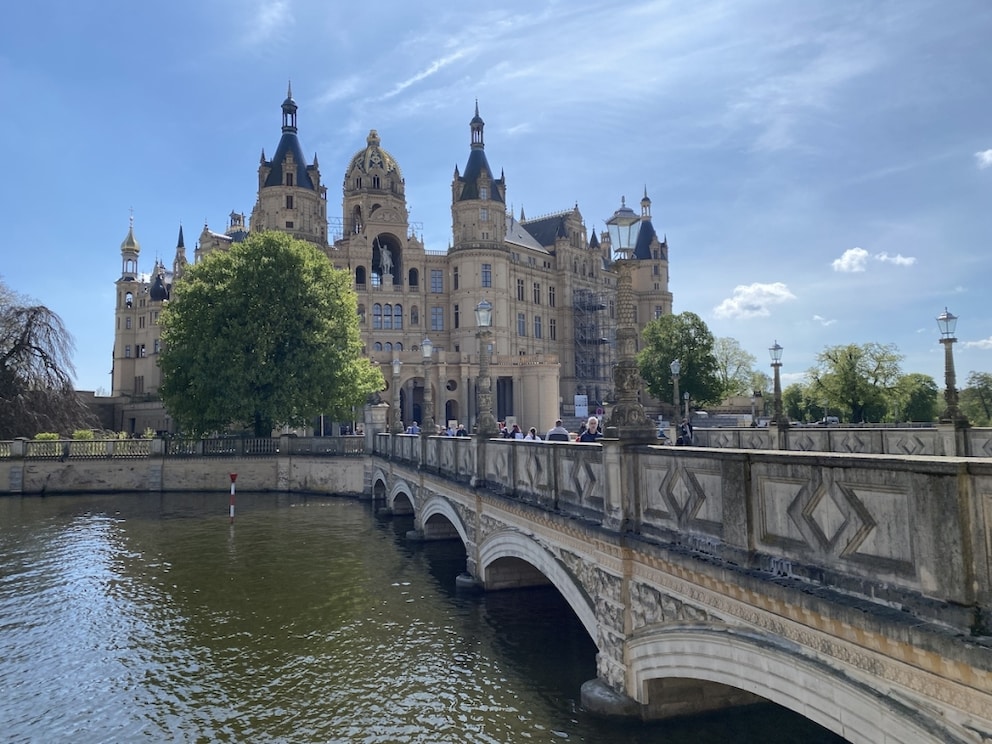July 16, 2025, 12:20 pm | Read time: 5 minutes
UNESCO has expanded its World Heritage list by 26 new sites. Among them is a location in Bavaria that attracts hundreds of thousands of tourists each year. Learn more about it at TRAVELBOOK.
Overview
New Sites in Germany Are Now UNESCO World Heritage Sites
Germany was already represented with 52 sites on the UNESCO World Heritage list, including 49 in the cultural heritage category and three natural heritage sites. At its meeting in Paris, the UNESCO World Heritage Committee decided to include the so-called fairy-tale castles of Bavaria’s King Ludwig II in the World Heritage list. These include the world-famous Neuschwanstein Castle (see photo above), Linderhof Palace, Herrenchiemsee Palace, and the King’s House on Schachen. They all form a single entry, as UNESCO often lists closely connected sites as a serial World Heritage site.

In its justification, the commission highlights in a press release that the castles reflect the fantasy worlds of Ludwig II, who had these magnificent retreats built in the second half of the 19th century according to his own ideas. The buildings are considered architectural masterpieces, as Maria Böhmer, President of the German UNESCO Commission, emphasizes.
A Brief History of the Tourist Magnet Neuschwanstein
The most famous of the four newly honored castles among tourists is undoubtedly Neuschwanstein Castle. It is considered the epitome of a fairy-tale castle worldwide. During its construction, which began in 1869, King Ludwig II was inspired by medieval knightly romance and the operatic worlds of Richard Wagner. He intended to use the castle as a retreat and personal fantasy dream. However, the king ultimately lived there for only a few months—he died in 1886 under circumstances that remain unexplained to this day. Learn more about this tragic story here.
Shortly after his death, Neuschwanstein was opened to visitors and quickly became one of Germany’s most famous attractions. “Around 1.4 million people visit ‘the castle of the fairy-tale king’ annually,” according to the website of the attraction. It was recently extensively restored.

The “fairy-tale king’s” personal favorite castle, however, is said to have been Linderhof, which is part of the entry—the only one of the castles completed during his lifetime. According to the online presence of Linderhof Palace, he spent a lot of time there.

Not the First German Castles on the List
Since last year’s session, a German castle has already been on the UNESCO Committee’s World Heritage Sites list: the Schwerin Residence Ensemble. The complex includes both the lakeside Schwerin Castle and 30 other historic buildings and gardens.

Its creation required a lengthy development process. The Schwerin Residence Ensemble owes its current appearance to the strategic expansion as a center of power in the 19th century. This was initiated by Grand Duke Friedrich Franz II, who wanted to architecturally highlight the long history of the House of Mecklenburg-Schwerin with the renovation. Thus, the residence ensemble emerged as an exceptional example of the combination of various architectural styles such as Neo-Renaissance, Neo-Baroque, Neoclassicism, Neo-Gothic, and the regional Johann-Albrecht style, making it a unique cultural site.

Was the “Real” Sleeping Beauty at Home in the Hessian Sababurg?

The Most Beautiful Gardens and Parks in Germany

7 Places for a Short Getaway at Pentecost 2025
All New UNESCO World Heritage Sites 2025 at a Glance
But back to the present. The list of UNESCO World Heritage Sites includes a total of 26 new additions. Here is the complete list, which includes 28 points, as two existing entries were expanded.
- Cavernas do Peruaçu National Park (Brazil)
- Møns Klint (Denmark)
- Omatí Monhô (Guinea-Bissau: the coastal and marine ecosystems of the Bijagós Archipelago)
- Hin Nam No (Laos, Vietnam), extension of Phong Nha-Ke Bang National Park
- Maputo National Park (Mozambique, South Africa), extension of iSimangaliso Wetland Park
- Gola-Tiwai Complex (Sierra Leone)
- Kŭmgangsan – Diamond Mountain (Democratic People’s Republic of Korea)
- Murujuga Cultural Landscape (Australia)
- Imperial Tombs of the Western Xia Dynasty (China)
- The Castles of King Ludwig II of Bavaria (see above)
- Megaliths of Carnac and the Morbihan Coast (France)
- Minoan Palace Centers (Greece)
- Maratha Military Landscapes (India)
- Prehistoric Sites of the Khorramabad Valley (Iran)
- Domus de Janas (Italy) – prehistoric art and architecture of Sardinia
- Archaeological Ensemble Port Royal (Jamaica)
- Cambodian Memorial Sites: From Centers of Oppression to Places of Peace and Reflection (Cambodia)
- Diy-Gid-Biy Cultural Landscape in the Mandara Mountains (Cameroon)
- Cultural Landscape of the Mulanje Massif (Malawi)
- Forest Research Institute Malaysia in Selangor Nature Park (Malaysia)
- Wixárika Pilgrimage Route to Wirikuta (Mexico)
- The Colonial Transisthmian Route (Panama)
- Rock Art along the Bangucheon Stream (Republic of Korea)
- Rock Paintings of the Shulgan-Tash Cave (Russian Federation)
- Cultural Heritage Sites of Ancient Khuttal (Tajikistan)
- Sardis and the Lydian Tumuli of Bin Tepe (Turkey)
- Paleo-Landscape of Faya (United Arab Emirates)
- Monuments and Landscapes of Yen Tu, Vinh Nghiem, Con Sop, and Kiep Bac (Vietnam)

